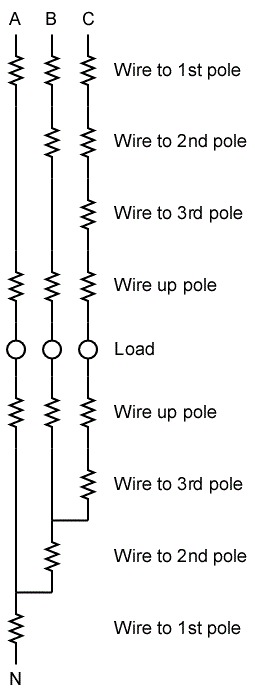- Location
- Placerville, CA, USA
- Occupation
- Retired PV System Designer
Zero current in one pole to pole segment means zero voltage drop on that pole to pole segment (e.g 2-3, 5-6, etc. It does not mean zero voltage drop from the service to the last pole in that segment.
You have an I**2R energy loss in two out of three runs in each group and that energy loss must be reflected in an overall voltage drop from the service point.
The neutral voltage drop in each group of 3 will be 1.732 times the voltage drop for one pole's worth of lights over the distance between two poles. I think... That or just the single voltage drop without the 1.732 factor.
You have an I**2R energy loss in two out of three runs in each group and that energy loss must be reflected in an overall voltage drop from the service point.
The neutral voltage drop in each group of 3 will be 1.732 times the voltage drop for one pole's worth of lights over the distance between two poles. I think... That or just the single voltage drop without the 1.732 factor.

